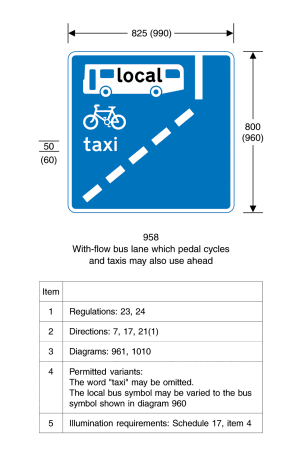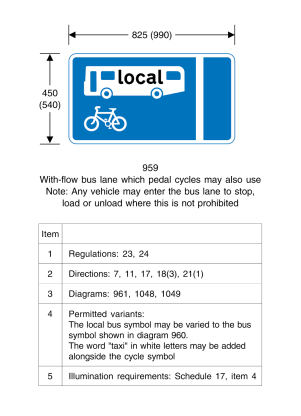Adjudicators decisions and case studies for bus lanes
Adjudicators’ decisions and case studies for a bus lane PCN
We set out below some adjudicators decisions which relate to contraventions of bus lane regulations. Some of these are published on the adjudicators’ website as “key cases” but most are not. These cases will provide you with a unique insight into how cases are dealt with, what matters the adjudicators take into consideration and the decisions which the adjudicators make and why. These should assist you when deciding to appeal your bus lane penalty charge notice.
In all the following cases the adjudicators have upheld the appeals of the motorist. You can refer to any of these cases in an appeal either to the adjudicator or indeed to the local authority before it reaches the appeal stage. Alternatively you are entitled to attend at an adjudicators office and view details of all cases. Of course every case is dealt with on its own merits but these cases will give you an idea of your chances of success. To make it easier to look through the cases we have grouped them according to what the appeal was based on. For example incorrect signs and lines.
The following cases are where the motorist used incorrect or missing signage or linage as the basis for their appeal
Case 1 – Appropriate signage not in place.
The appellant had turned into a road and there were no signs in the road from which he turned indicating a bus lane. The council provided pictures of a sign that the appellant would have seen but the appellants evidence suggested that the council had only installed the additional signage after the contravention occurred and he had made representations to the council. The adjudicator agreed that the signage at the time was inadequate and allowed the appeal.
There should be signs on side roads leading into a road where there is a bus lane stating “Bus Lanes” click here for signs and lines There are very strict rules relating to the submission of evidence to the adjudicator.
Case 2 – Signage and road markings – TFL
The appellant was in a bus lane at night. The 24/7 sign was however “markedly out of alignment and crucial surface marking really rather scrappy and worn” The adjudicator accepted that the markings “were not adequately prominent” and the appeal was allowed.
All signs must be legible and facing the correct way which is 90 degrees to the pavement.
Case 3 – Signage and lineage
The appellant stated that he did not see either the first or the second blue sign warning of a bus lane because they were obscured by a bus. The adjudicator said “that normally a motorist’s failure to see a prescribed sign would not avail him. However it is incumbent of TFL (transport for London) to demonstrate that the bus lane was correctly signed in all respects, particularly when, as here, the operational times change in a relatively short length of road. He also noticed that the tapering dotted white lines indicating the start of a new bus lane were not in place which he said was ” not merely incorrect but, in context, positively misleading to a motorist who has been driving perfectly lawfully down a stretch of non-operational bus lane. He stated that because of the incorrect marking the contravention did not occur and the appeal was allowed.
We have seen quite often situations like this for example in Baker Street where the hours of enforcement change and the enforcing authority have not marked the bus lane correctly. The rules are clear in that if the enforcement hours change then a separate bus lane must be created with a 1 in 10 taper at the start and the correct signs as well as a sign at the end of the previous Bus Lane stating “end of Bus Lane”. click here for signs and lines.
Case 4 – Bus lane markings
The appellant took photo’s that showed that the surface markings for the bus lane were faint and worn to an unusually high degree. TFL claimed that the signage was very clear. However the signs were not at the correct angle to the road either so the appeal was upheld.
All signs and road markings must be legible and facing the correct way which is 90 degrees to the pavement.
Case 5 – Inadequate signage
This appeal was allowed because the appellant contested that the signage was not adequate and the pictures supplied by TFL were over a year before the alleged contravention occurred and the adjudicator said “I am not satisfied as to the adequacy of the signage in place warning of the restrictions”.
All signs must be legible and facing the correct way which is 90 degrees to the pavement.
Case 6 – TFL road markings
The appellant did not deny driving in the bus lane but said he could not see where the actual bus lane commenced. He produced pictures. the video evidence showed him entering but immediately exiting the bus lane after he noticed that he was in a bus lane. The appeal was allowed because the adjudicator was “not satisfied that the road markings of the bus lane were adequate at the time of the contravention”.
All signs must be legible and facing the correct way which is 90 degrees to the pavement.
Case 7 – Poor markings and signs placed incorrectly
The adjudicator allowed the appeal because the road markings were barely visible and the blue signs were in the wrong positions.
The appellant did not deny driving in a bus lane but said that there were signs indicating that the bus lane was not in operation. The adjudicator said that TFL “is under a duty to provide reasonable signing so as to give the motorist fair warning of any restrictions which are in force”. “This duty extends to all signs detailing restrictions including signs indicating a temporary suspension of a particular restriction” Tfl did not provide proof of the adequacy of the signage so the appeal was allowed.
All signs must be legible and facing the correct way which is 90 degrees to the pavement. Sometimes temporary signs allowing use of bus lanes are not clear. You should take photographs.
Case 8 – Signs and lines
The bus lane markings were not clear throughout the length of the bus lane. The signs were not in accordance with the 2002 regulations particularly signs shown in diagrams 958 and 959. The appeal was allowed.
All signs must be legible and facing the correct way which is 90 degrees to the pavement. See diagrams 958 and 959 below.



You need to be logged in to see this part of the content.
Please [ Login ] or [ Register ]. Get the information to appeal against your PCN!
Next: Enforcement procedure for a bus lane ticket (PCN)
